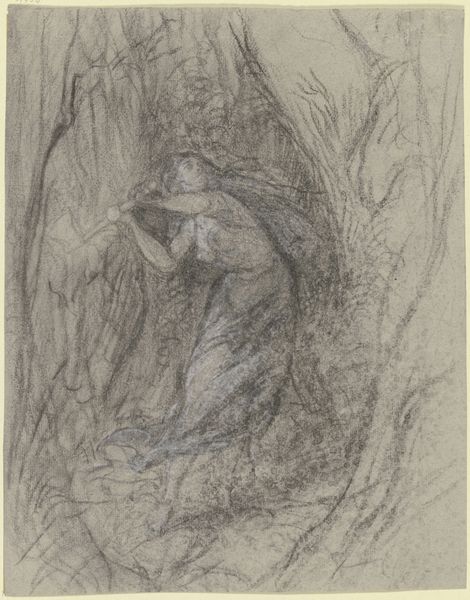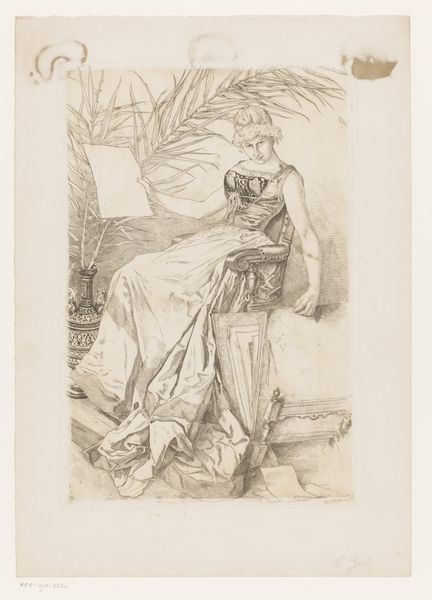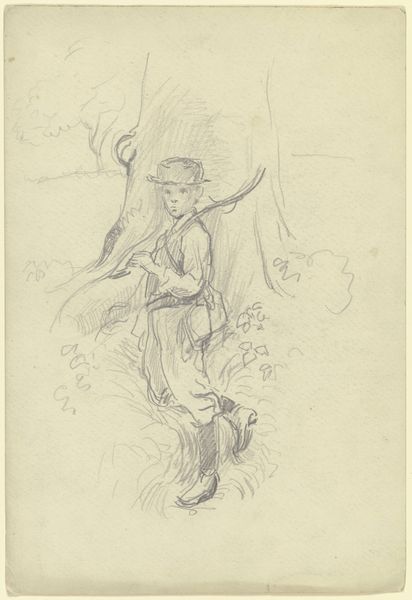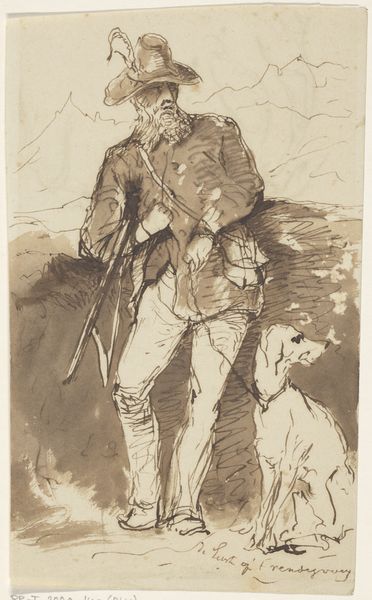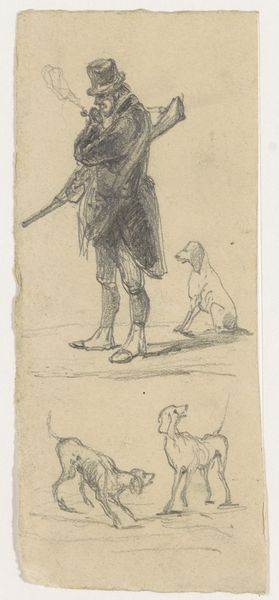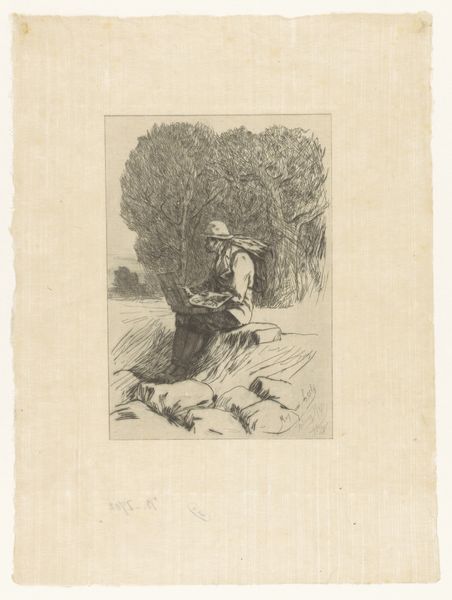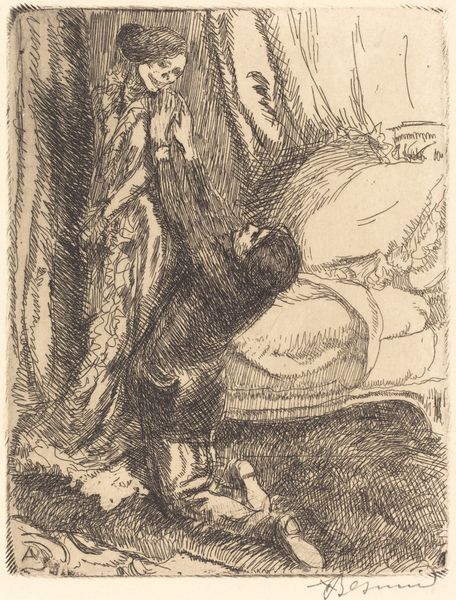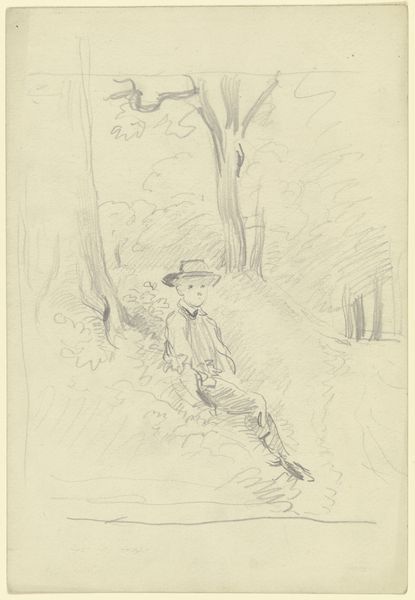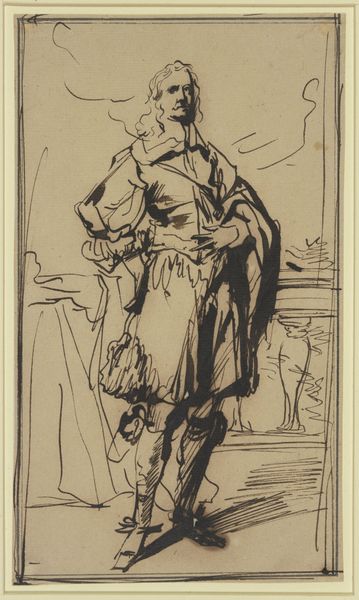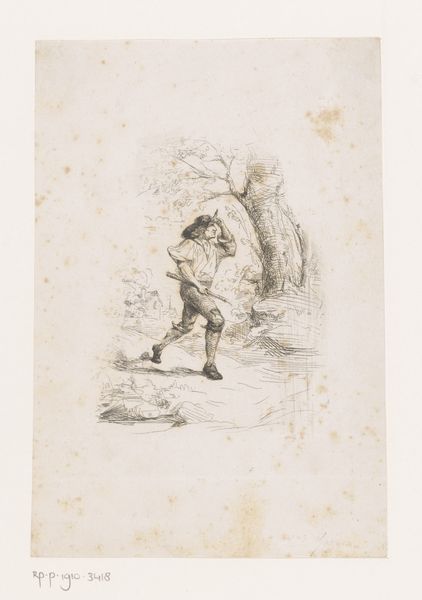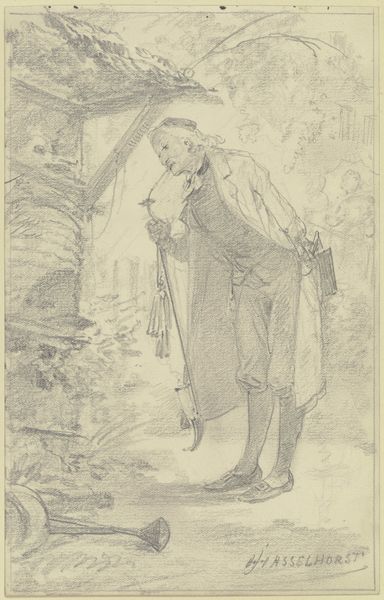
Dimensions: height 235 mm, width 138 mm
Copyright: Rijks Museum: Open Domain
Curator: What a wonderfully relaxed drawing. I love the sense of a quiet moment it evokes. Editor: Indeed, it’s quite still. There’s a pensive mood about it for me. The use of sepia ink gives it an antique feel, making me consider ideas around labor and leisure in the mid-19th century. Curator: This drawing by Johannes Tavenraat, created sometime between 1840 and 1870, is titled "Hunter Leaning Against a Tree.” It is a piece housed right here at the Rijksmuseum. You’ll notice it’s primarily ink on paper. Editor: I am immediately drawn to the man’s pose. He looks almost melancholic as he leans against the tree. The gun next to him almost makes the viewer complicit. Curator: That is precisely the Romantic sentiment Tavenraat was capturing at the time. Think about the cultural image of the hunter: simultaneously solitary, masculine, and free, yet tied to labor, land and ideas of conservation. Editor: Conservation, or exploitation? I keep returning to his attire – that loose-fitting coat and hat, not necessarily designed for rugged activity, I’m questioning his connection to the working class? Curator: Tavenraat made his career by rendering landscapes. His style demonstrates an understanding of how one's surroundings shape the individual. I would suppose this drawing is rooted in the period's fascination with nature and representations of social types. Editor: Representations that serve certain socio-political functions, perhaps? Is the image intended to celebrate the hunt as a noble tradition, even for the "everyman"? The hunter's placement in the composition—somewhat central—suggests a celebration of rural life. Curator: Or, conversely, this romanticized portrait could question changing views around the role of labor as industry shifts it into a less central, picturesque, part of civic life. What I admire about this particular work is Tavenraat’s loose handling of the ink that suggests immediacy in observation. Editor: Despite its conventional genre subject matter, I agree it possesses a captivating sincerity, capturing a unique and nuanced portrayal of 19th-century identity that still sparks meaningful dialog today. Curator: Precisely. And that's what makes a work worthy of reflection, even after all these years. Editor: Indeed, and these images serve as cultural documents worthy of deeper consideration in terms of history, identity and artistic tradition.
Comments
No comments
Be the first to comment and join the conversation on the ultimate creative platform.

